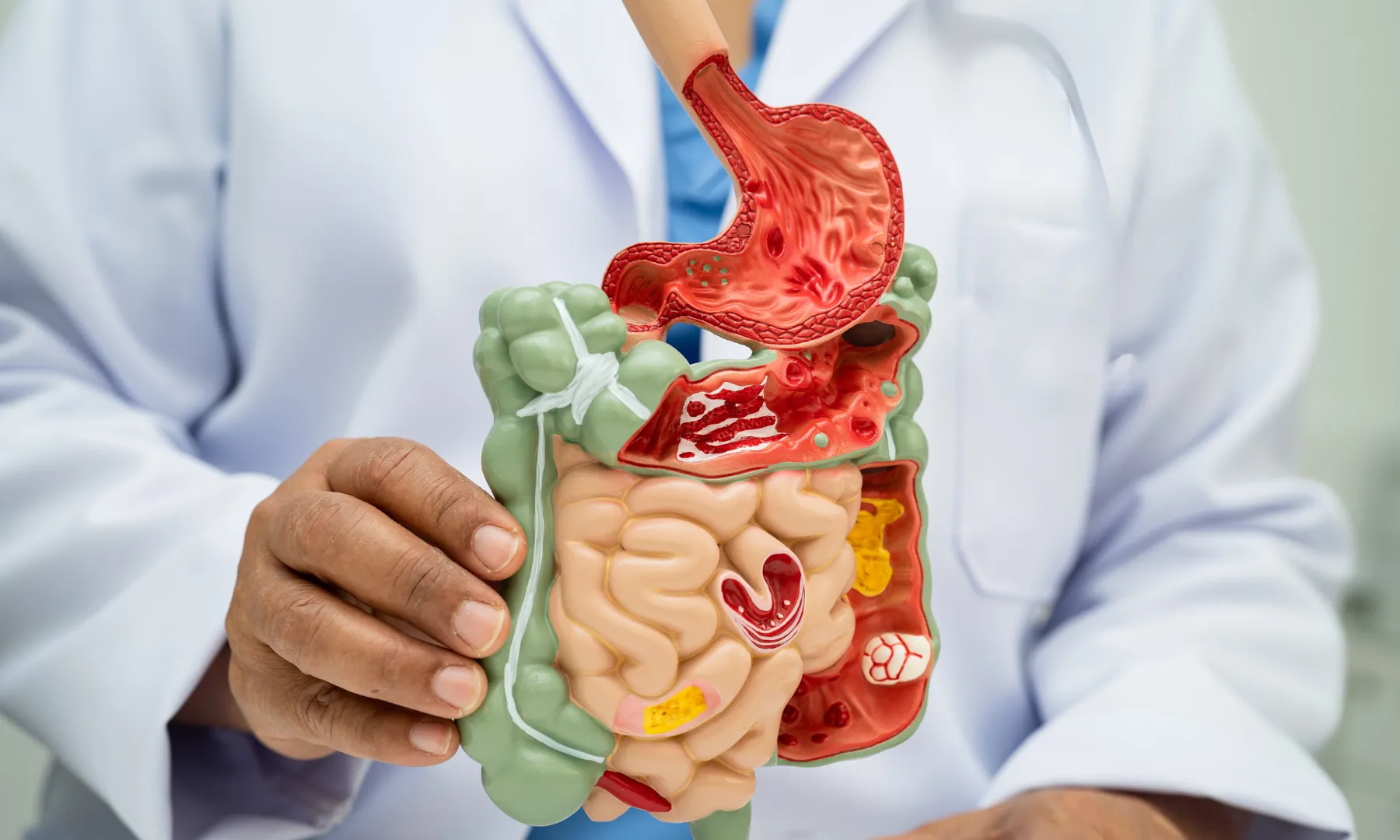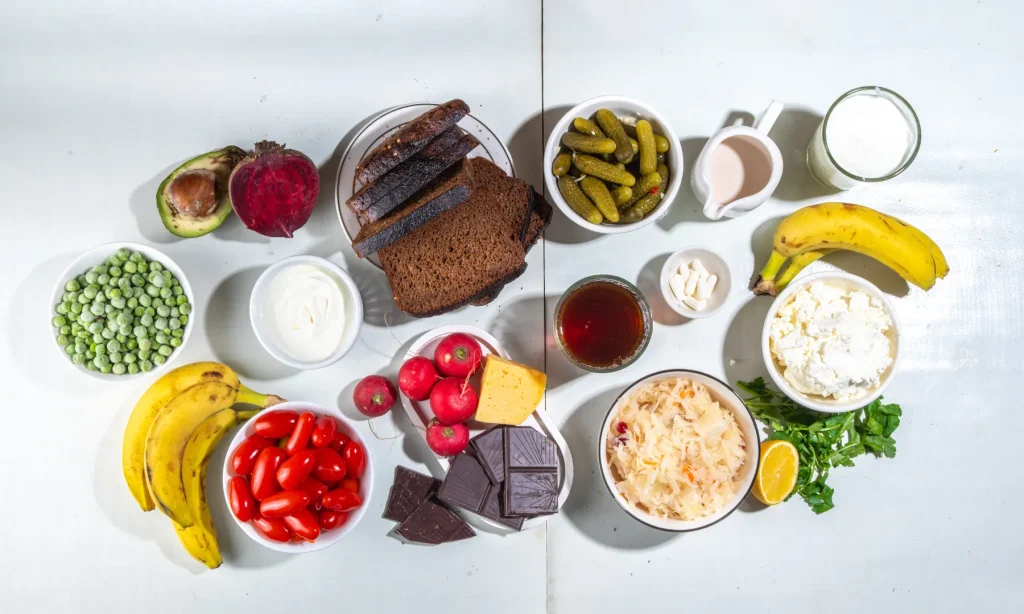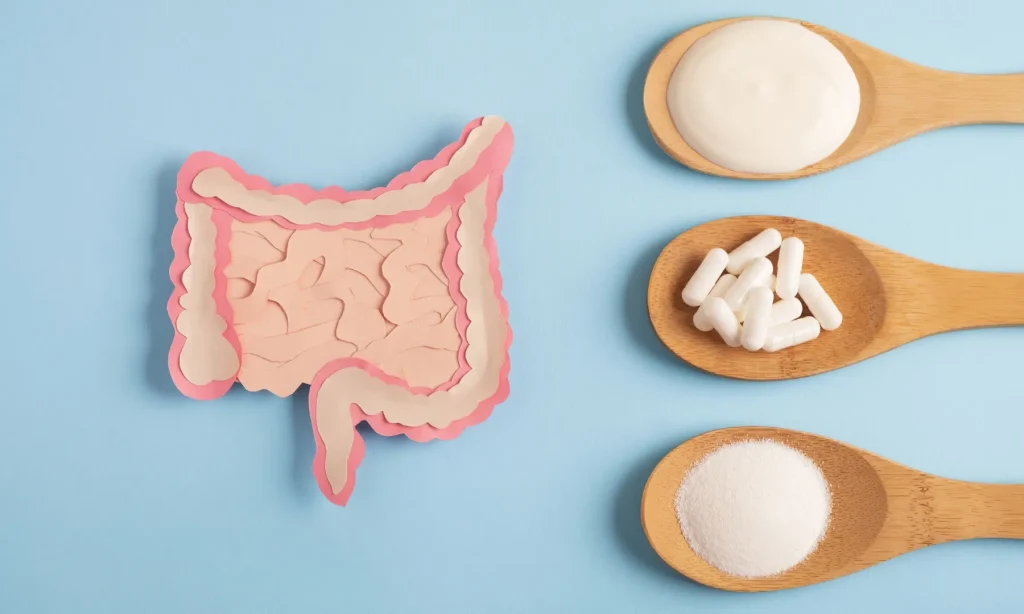
Ever had a patient whose gut just won’t quit, bloating, brain fog, weird food intolerances, and every elimination diet, supplement stack, or “benefit probiotic” seems to flop? You’re not alone. The world is full of folks who bounce from one GI fix to another, never quite finding the answer. Here’s something that’ll make you rethink your approach: did you know that a single letter-change in your DNA can decide whether your gut is a fortress or a revolving door for pathogens? That secret is at the core of nutrigenomics gastrointestinal health.
Our genes aren’t just blueprints for eye color or hair type: they’re the switchboard for how your gut handles stress, food, bacteria, and even histamine. Nutrigenomics lets us peek behind the curtain, revealing why dietary interventions based on genetics aren’t a pipedream: they’re already transforming practices like yours. Ready to ditch the one-size-fits-none model and get practical about functional GI genomics? Let’s immerse ourselves and see how precision nutrition connects DNA to lasting digestive health.
Key Takeaways
Nutrigenomics of gastrointestinal health personalizes gut treatment by aligning dietary interventions with individual genetic variants.
Specific genes like FUT2, MUC2, DAO, and NOD2 critically influence gut barrier strength, immune response, and histamine metabolism.
Testing for genetic variants and combining results with stool analysis provides a comprehensive picture for tailored GI protocols.
Stepwise protocols using targeted prebiotics, probiotics, nutrients, and histamine management offer better outcomes than generic approaches.
Clear communication and education on nutrigenomics empower patients and improve compliance with personalized gut health strategies.
Table of Contents
The Genetic Foundations of Gut Function
Genetics isn’t just abstract science; it’s the wrench behind your patient’s gut leaks, histamine headaches, and immune flares. When you peer into gastrointestinal health with a genomics lens, a few key genes leap out: FUT2, MUC2, DAO, HNMT, and NOD2. These aren’t Scrabble tiles, they’re the superheroes (or sometimes “supervillains”) running your patients’ guts.
FUT2, MUC2, and Mucosal Barrier Integrity
Imagine the gut lining as your home’s front door. FUT2 (think Secretor gene) helps decide whether your gut rolls out the welcome mat for beneficial Bifidobacteria or leaves it on the porch, vulnerable to uninvited guests. If you’re a FUT2 non-secretor, that door stays a bit shut, so less fuel for friendly microbes and a bigger risk for dysbiosis, especially if you pile on refined carbs or antibiotics.
MUC2 is the gene that decides how slippery and robust your mucus barrier is. When MUC2 or related mucosal barrier SNPs go sideways, your underlying mucin production falters. Think threadbare rug instead of plush carpet. Suddenly, toxins, bacteria, and even bits of undigested food get more access, and the gut’s immune system flips out, leading to chronic inflammation or even IBD.
Pro insight: If you see persistent IBS, repeated infections, or barrier markers like zonulin staying high, check those FUT2 and MUC2 variants (like rs601338 and rs10794288). Tackling impaired mucosal glycosylation boosts microbiome resilience and keeps pathogens out.
DAO and HNMT Variants in Histamine Clearance
Here’s where the “why does sauerkraut give me migraines?” mystery unravels. DAO is a key enzyme that scrubs away histamine in the gut. But for patients with DAO gene variants (rs10156191) or HNMT snips (rs11558538), that clean-up crew is perpetually understaffed. Classic signs, a runny nose after wine, facial flushing, stomach cramps after salsa, can point straight back to histamine intolerance genetics, not just what’s on the plate.
And here’s the kicker: this isn’t just a diet issue. People with low genetic DAO or HNMT activity can react to healthy foods if their on-board machinery is slow. Practitioners: Start looking past diet logs and layer in the genetic story.
NOD2 and Immune Regulation in IBD Risk
You’ve almost certainly seen Crohn’s and ulcerative colitis patients who don’t improve, even when they swear by their food plans. NOD2 is a microbial-sensing gene that’s famous for flagging bacteria for the immune system. Mutations at sites like rs2066844, rs2066845, or rs2066847 break the surveillance system, letting gut bugs run wild, or, ironically, trigger excessive immune fire.
If you’ve got a patient with stubborn inflammation, early-onset IBD, or just “mystery” immune flares, scan for NOD2 and related immune genes. It could shift your strategy for dietary immune modulation and microbiome support.

Translating SNPs into Dietary Protocols
Putting data into action, this is where the rubber meets the road (and where most practitioners get stuck) with clinical applications. Knowing genetic variants doesn’t mean much unless you translate them into an actionable, stepwise protocol. Here’s how to bridge that gap.
Prebiotics and Probiotics for FUT2 Non-Secretors
FUT2 non-secretors often walk into your office with stubborn dysbiosis, low Bifidobacteria on stool tests, or a track record of post-antibiotic misery. The fix? Dial in galacto-oligosaccharides (GOS), inulin, or partially hydrolyzed guar gum as starter prebiotics. But, and here’s something I wish I’d learned years ago, start slow. Too much prebiotic and you’ll spark a bloat-fest. Combine these with specific Bifidobacterium longum strains, building up as tolerance improves (think of it as coaxing shy houseguests out of their room).
PRO TIP: Mix different probiotic species, not just Bifidobacterium. Microbiome genetics and functional GI genomics both show that diversity, not just abundance, is what builds true resilience.
Nutrients for Barrier Repair
For patients scoring problem SNPs in FUT2, MUC2, or barrier genes like OCLN, mucosal “repairs” need more than generic glutamine protocols. Go beyond textbook advice: add zinc carnosine, butyrate, omega-3s, and polyphenol blends (think rainbow salads, berries, olive oil) for tight junction support AND mucin regeneration.
Fun fact: I once stubbornly ignored a client’s MUC2 variant and stuck to classic zinc and glutamine. The improvement was sluggish until we tossed in a polyphenol-rich berry smoothie each morning. Within three weeks, zonulin dropped, and so did the late-night calls about “fiery” gut pain.
Low-Histamine Nutrition for DAO Carriers
Low-DAO? The best elimination diet in the world won’t fix it unless you address genetic clearance. Teach patients to spot fermented foods, aged cheeses, alcohol, and cured meats as “watch out” items. The secret sauce: supplement with Vitamin C, B6, and copper to nudge up DAO function, plus DAO enzyme supplements for those significant events (holiday cheese plate, we’re looking at you).
If signs persist even with a clean, bland diet, check for dysbiosis or gut inflammation, swelling the histamine pool. That’s your cue to address microbiome genetics and bring in anti-inflammatory support.
Testing and Interpretation Workflow
Feeling overwhelmed by which panel or test to order? Welcome to the club. Sorting through raw genetic data and stool tests gets easier (and way more fun) with a system.
Recommended Panels and Companion Stool Tests
Start with panels from 3×4 Genetics, GX Sciences, NutriGenomics Canada, or GenomicInsight™ if you’re in North America. For the gut, always pair with a robust stool analysis like Genova GI Effects or GI-MAP. Why both? Because genetic data shows potential, while stool and biomarkers show what’s actually happening now.
Use this cheat sheet:
FUT2: low Bifidobacterium/short-chain fatty acid markers
NOD2: high calprotectin, secretory IgA swings
DAO: histamine overload, unusual dysbiosis patterns
Combining Indicator Data with Genetic Results
Next, overlay signs. Let’s say your client’s main complaint is IBS-bloating, and labs show non-secretor FUT2 and MUC2 variants. Phase in prebiotic modulation and a mucosal barrier protocol. If it’s IBD flares tied to NOD2 or IL23R, focus on anti-inflammatory nutrigenomics like curcumin, polyphenols, and omega-3s.
Never fall into the “genetic determinism” trap. Remind your patients (and yourself): genetic roadmaps show the rough terrain, but epigenetic changes, lifestyle, diet, and stress set the course. Always weave dietary interventions based on genetics into a bigger, flexible plan.

Case Example: Low-FUT2 + High-DAO Patient Protocol
Let’s stroll through a real-life scenario, a mashup of a dozen cases I’ve seen, but true to day-to-day practice.
Meet Jane, a 42-year-old executive with relentless bloating, histamine headaches, and, you guessed it, years of low Bifidobacterium on every stool test. Her genetic panel? FUT2 non-secretor (rs601338 AA) and a DAO reduced-activity variant.
How do we help Jane rebuild her gut from the ground up?
Phase 1 (first 2 weeks): Low-histamine diet, with a boost of DAO cofactors (think Vitamin B6, copper, and yes, DAO enzyme when eating out). Gut signs ease up enough to get through her family reunion without hiding in the bathroom.
Phase 2 (weeks 3–6): Gradually introduce GOS, Bifidobacterium probiotics, and a couple of fiber sources, starting slow, like adding a dusting of guar gum to smoothies.
Phase 3 (weeks 7–12): Layer in mucosal repair nutrients (L-glutamine, polyphenols, zinc carnosine), and diversify the diet’s fiber sources.
Tracking progress? Run a follow-up GI-MAP or Genova, and let indicator journals do the rest. If you haven’t seen a patient’s life turn around after this protocol, just once, you’re in for a treat. (Warn them that the first few days of prebiotics can mean some fireworks. Yes, Jill, it’s normal to feel gassy at first.)
Practitioner Checklist & Patient Communication Scripts
Let’s make it practical. When the clinic day’s chaos hits, you want a grab-and-go system you can personalize fast.
Practitioner Workflow Checklist
☐ Order relevant genetic and stool tests
☐ Map SNPs to top signs and stool/lab findings
☐ Design a phased nutrigenomic gut protocol (prebiotic/probiotic, barrier repair, immune modulation, histamine control)
☐ Track biomarkers (calprotectin, sIgA, Bifidobacterium, histamine) every 6–8 weeks
☐ Adjust the protocol based on patient tolerance, indicator shifts, and lab changes
Patient Communication Scripts
Explaining genetic results (simple, clear, and motivational):
“Your FUT2 gene acts like your gut’s gardener; it decides what kind of fertilizer (prebiotics) works best. Since your gut prefers a little help, we’ll use special nutrients to bring those good bacteria back in force.”
“DAO gene isn’t just about what you eat, it’s how your body handles ‘histamine traffic.’ With your version, we’ll focus on foods and cofactors that help your gut break down histamine, so you feel better after meals.”
“Genes aren’t a life sentence; they’re more like a map. We use diet, lifestyle, and supplements to rewrite the journey.”
Having these scripts handy lets you boost compliance, nip misconceptions in the bud, and create a true partnership with your patient.
Frequently Asked Questions
What is nutrigenomics gastrointestinal health?
Nutrigenomics gastrointestinal health explores how your unique genes affect your digestive system’s response to foods, stress, and bacteria. By analyzing genetic variants, practitioners can design precise nutrition and supplement strategies to optimize digestive health and address persistent gut issues.
How does FUT2 and MUC2 genes impact gut health?
FUT2 and MUC2 play essential roles in the gut’s mucosal barrier. Variants in these genes can reduce protective mucus production and beneficial bacteria like Bifidobacteria, increasing vulnerability to dysbiosis and gut inflammation, particularly if exposed to refined carbohydrates or frequent antibiotics.
What personalized nutrition strategies work for FUT2 non-secretors?
FUT2 non-secretors benefit from gradual introduction of specific prebiotics such as GOS and inulin, combined with targeted Bifidobacterium probiotics. Diverse fiber sources and a phased approach help rebuild the microbiome and reduce symptoms like bloating and post-antibiotic gut issues.
Can nutrigenomics help manage histamine intolerance?
Yes, understanding genetic variants like DAO and HNMT allows practitioners to recommend low-histamine diets, supportive nutrients (Vitamin C, B6, copper), and DAO enzyme supplementation, helping patients manage symptoms caused by poor histamine breakdown.
What tests are recommended for assessing nutrigenomics and gastrointestinal health?
Practitioners typically start with panels from companies like 3×4 Genetics or GX Sciences and pair these with stool tests such as Genova GI Effects or GI-MAP. Genetic tests reveal predispositions, while stool analyses show current gut health and microbial imbalances.
How does nutrigenomics differ from traditional approaches to gut health?
Unlike one-size-fits-all plans, nutrigenomics tailors interventions to a patient’s genetic makeup. It addresses underlying genetic contributors to digestive problems, improving treatment success and providing longer-lasting digestive health benefits.
References:
Wacklin, P., Mäkivuokko, H., Alakulppi, N., Nikkilä, J., Tenkanen, H., Räbinä, J., Pöntinen, E., Mättö, J., & Satokari, R. (2011). Secretor genotype (FUT2 gene) is strongly associated with the composition of Bifidobacteria in the human intestine. PLoS ONE, 6(5), Article e20113. https://pubmed.ncbi.nlm.nih.gov/21625510/
Visschedijk, M. C., Alberts, S. R., van den Berg, E., Koudstaal, J., de Bock, G. H., Kats-Ugurlu, G., de Jong, D. J., Pierik, M., van der Woude, C. J., Dijkstra, G., & Weersma, R. K. (2016). Pooled resequencing of 122 ulcerative colitis genes in a large Dutch cohort suggests population-specific associations of rare variants in MUC2. PLoS ONE, 11(8), Article e0159609. https://pubmed.ncbi.nlm.nih.gov/27490946/
Okutan, G., & Pektaş, M. B. (2023). Cumulative effect of AOC1 gene variants on symptoms and pathological conditions in adult women with fibromyalgia: A pilot study. Frontiers in Genetics, 14, Article 1180777. https://pubmed.ncbi.nlm.nih.gov/37359379/
Maintz, L., Yu, C. F., Rodríguez, E., Baurecht, H., Bieber, T., Illig, T., & Novak, N. (2011). Association of single nucleotide polymorphisms in the diamine oxidase gene with diamine oxidase serum activities. Allergy, 66(7), 893–902. https://pubmed.ncbi.nlm.nih.gov/21488903/
Hashim Al-Bderee, N. M., Al-Saffar, A. J., Al-Mudhaffer, F. K., Al-Saffar, A. J., Al-Saffar, A. J., & Al-Saffar, A. J. (2023). Genetic polymorphisms of NOD2 and ATG16L1 in different types of digestive tract inflammation. Archives of Razi Institute, 78(1), 493–498. https://pubmed.ncbi.nlm.nih.gov/37312743/

